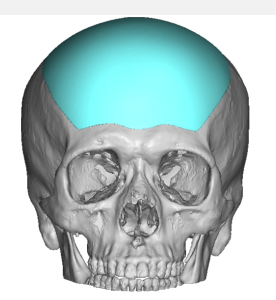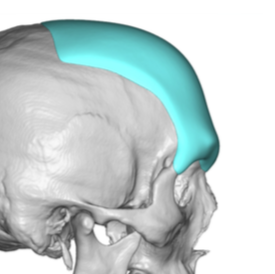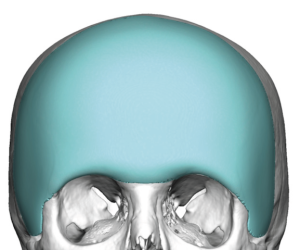
Different materials are available for custom forehead augmentation use such as solid silicone, PEEK and Medpor, but few reports exist with their use. While there are stadhard silicone and ePTFE forehead implants available around the world their use is generally limited to small forehead augmentations.
In the February 2024 issue of the Aesthetic Plastic Surgery journal an article was published on this topic entitled ‘Endoscopic-Assisted Forehead Augmentation with Polyetheretheketone (PEEK) Patient-Specific Implant (PSI) for Aesthetic Considerations’. In this clinical study the authors review their experience in eleven (11) patients using custom designed implants. The implants were designed using standard virtual surgical planning (VSP) methods and then manufactured using computer-aided technology which is how PEEK implants are made. Then through a scalp incision the subperiosteal forehead pocket was dissected aided by the endoscope. The implants were placed and fixed by screws.The total operative time averaged less than 90 minutes in most cases.
Their clinical results with adequate long term followup showed no implant exposure, extrusion or removals were reported. (they did not say specifically no infections but I assume that none occurred) Aesthetic satisfaction was generally high by Face Q scores.

Dr. Barry Eppley
World-Renowned Plastic Surgeon



